Here’s an easy version of Singapore Noodles made using chicken and bacon instead of having to hunt down Chinese BBQ Pork and peel fresh prawns. Same sauce, same vermicelli noodles, just as delicious. You can make this tonight!
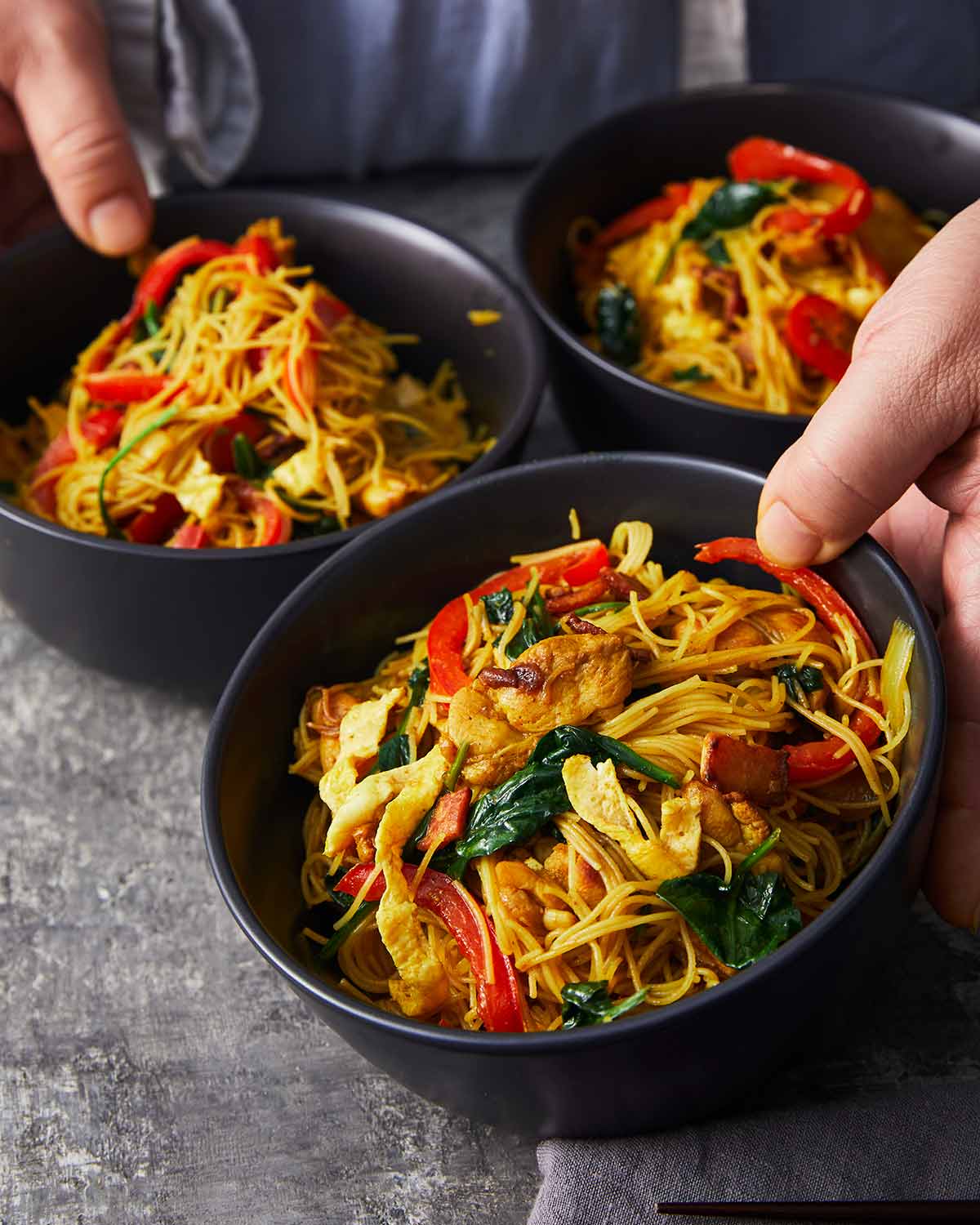
Singapore chicken vermicelli noodles
These noodles are a simpler “I can make this tonight!” version of Singapore Noodles, a firm takeout favourite here in Australia. It’s made with yellow curry flavoured vermicelli noodles stir fried with vegetables, egg ribbons, Chinese BBQ Pork (Char Siu) and fresh prawns. It’s fast to make – if you happen to have the pork and prawns on hand. Which I never do.
So here’s a version you can make using more regular weekly grocery items. Bacon, chicken, baby spinach and bean sprouts (useful no-chop vegetables I always have). Plus red capsicum strips and egg ribbons (literally just a thin omelette cut into strips), both of which are Singapore Noodle staples, all tossed in the Singapore Noodle curry flavoured sauce.
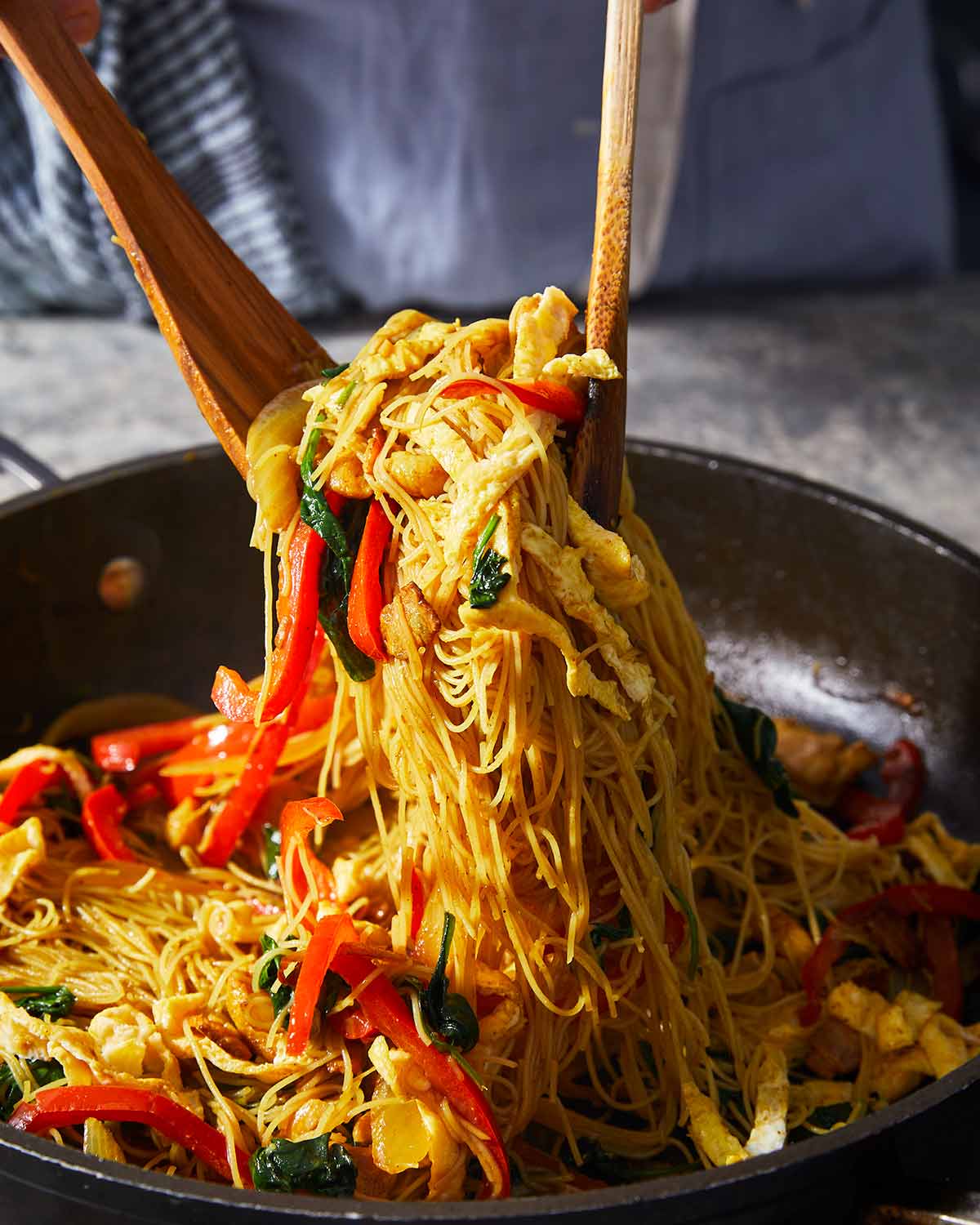
Ingredients in Singapore vermicelli noodles
This one’s a great versatile recipe you can make with whatever vegetables you’ve got on hand. I think you’ll also like that there’s a good amount of vegetables in it, so it’s a well-rounded complete meal.
THE PROTEINS
A mix of chicken, bacon and egg keeps things interesting. Feel free to change the chicken to another protein. But I really urge you to use the bacon. It adds a great flavour pop that replaces the little bits of Chinese BBQ Pork that you get in traditional Singapore Noodles.
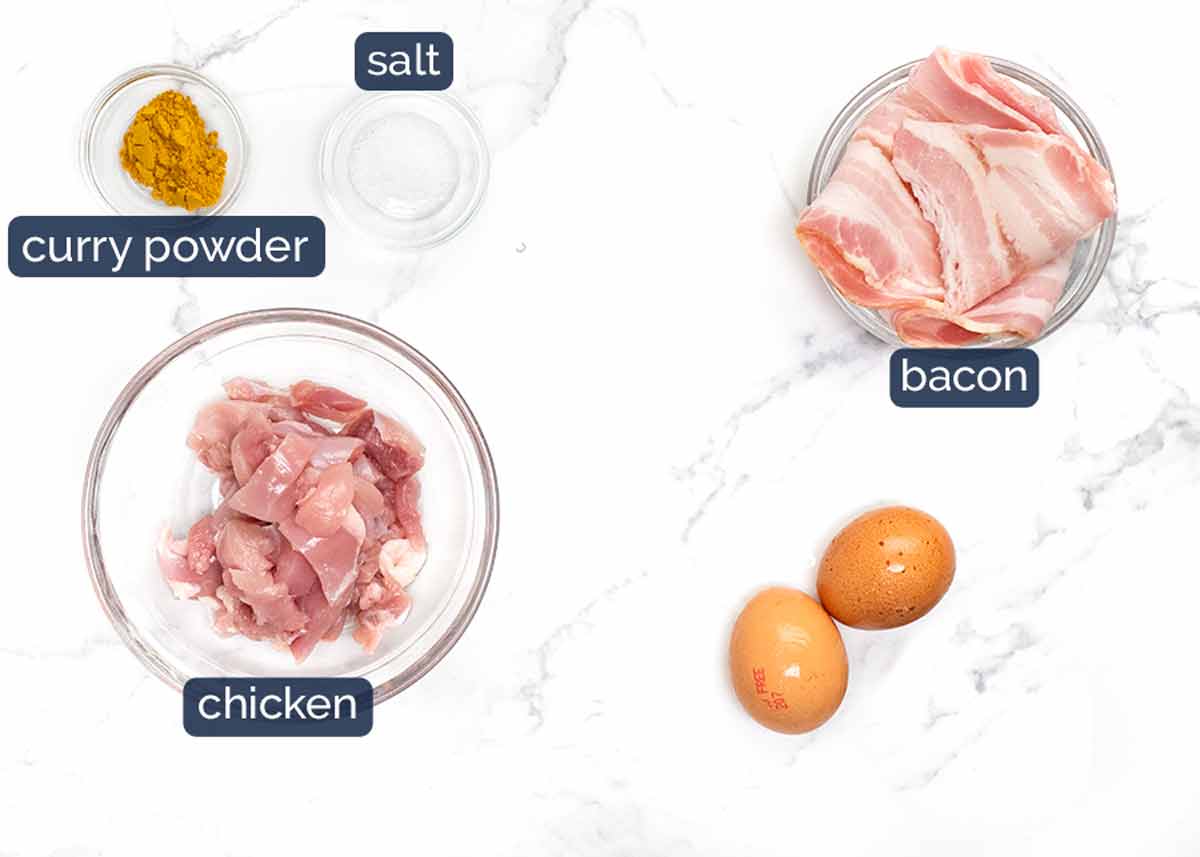
-
Chicken – I like to use boneless, skinless chicken thighs because they are juicier than breast and tenderloin, though they work just fine too. We only use 150g/5 oz, which is around one large thigh. Don’t forget we have bacon and egg too!
-
Curry powder and salt – To season the chicken. Simple but never boring, because we get flavour from the sauce too! For the curry powder, you just need the regular kind you get from grocery stores, like Clives and Keens (Australian brands). No need to hunt down an obscure Singaporean curry powder! Avoid hot curry powder – unless you want your noodles spicy. 🙂
-
Bacon – Streaky bacon, for the best flavour. Though lean bacon will work too (we call it “shortcut bacon” here in Australia, the round eye part that’s devoid of flavour – oops, I mean fat 😂).
-
Eggs – Two eggs which we will use to make a thin omelette crepe which we then slice into ribbons. Signature feature of traditional Singapore Noodles which we’re keeping!
FOR THE STIR-FRIED NOODLES
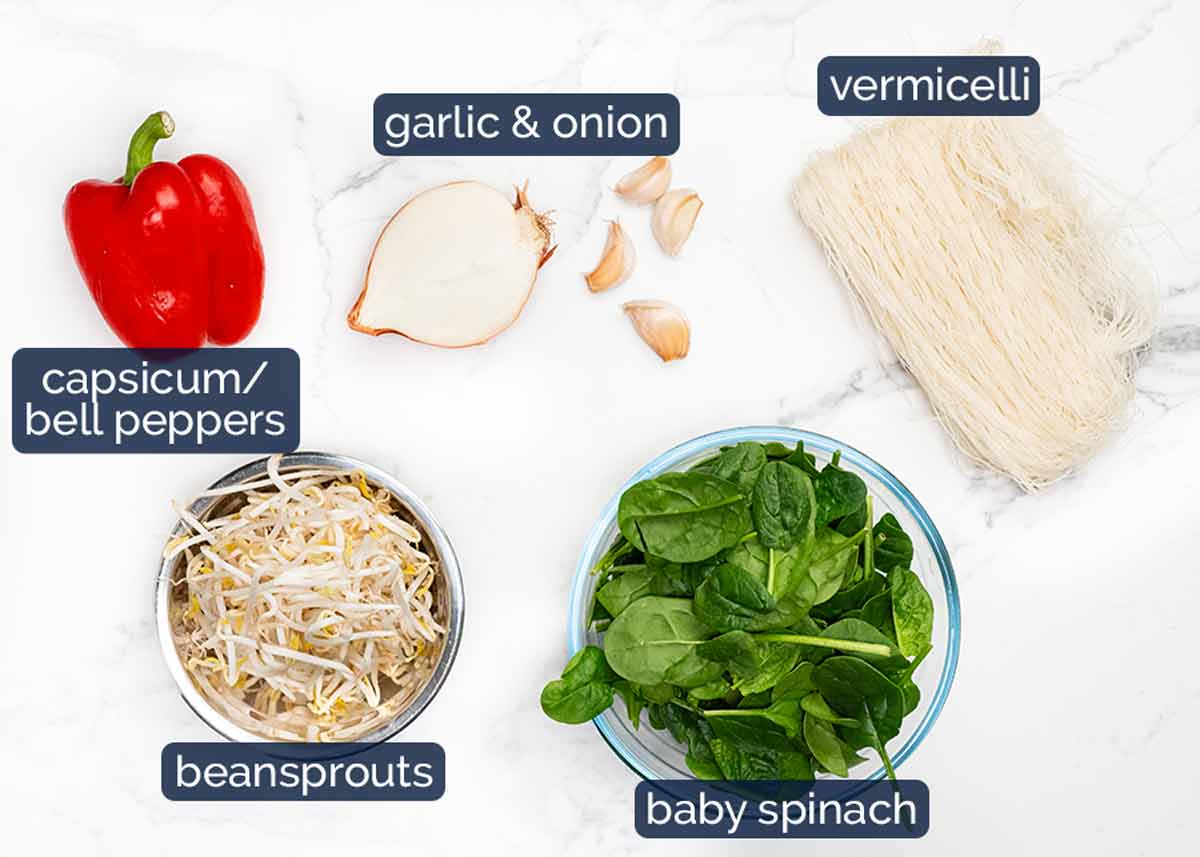
-
Vermicelli noodles – The thin white dried “pokey” noodles that are prepared by soaking in hot water. Very common these days, in the noodle or Asian aisle in grocery stores.
Not to be confused with glass noodles / bean thread noodles which are the clear kind (see Glass Noodle Salad recipe for a closer look at these). While you can make this recipe with glass noodles, it is not quite as good because the noodles are so slippery, the sauce doesn’t stick to them very well!
-
Garlic and onion – Stir fry staples!
-
Capsicum (bell pepper) – I like the red strips in traditional Singapore Noodles so I kept them for this recipe.
-
Bean sprouts and baby spinach – “Grab and toss” vegetables that helps make this recipe fast to make while adding more vegetables so it’s a well rounded me. Feel free to use more of either, or substitute with other cook-able leafy greens. Or you could be a real rebel and make the effort to chop some vegetables yourself!
SINGAPORE NOODLE SAUCE
And here’s what you need for the sauce, which is the same as the sauce used in traditional Singapore Noodles.
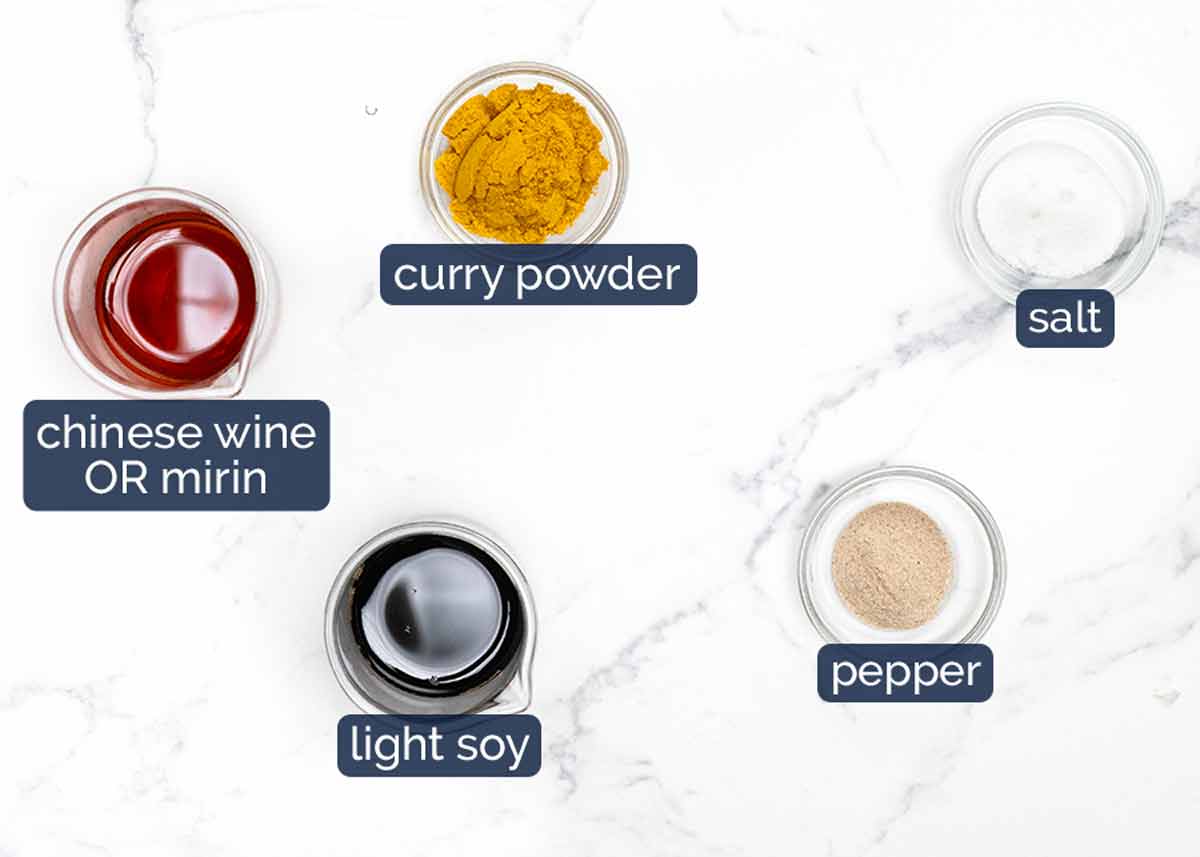
-
Soy sauce – Use either light or all purpose soy sauce. But not dark soy sauce – flavour is too strong and the colour is too intense! More on which soy sauce to use when here.
-
Chinese cooking wine (“Shaoxing wine”) is an essential ingredient for making truly “restaurant standard” Asian noodles. Without, the flavour is missing something. Substitute with Mirin, cooking sake or dry sherry. Non alcoholic substitute – 1/3 cup (80 ml) low sodium chicken stock. Expect to toss the noodles for an extra minute or two as it will require a little extra time for the sauce to reduce.
-
Curry powder – Just the regular stuff you get from grocery stores, like Clives and Keens (Australian brands). Avoid hot – unless you want the heat!
-
White pepper rather than black is the standard in Asian cooking. The flavour is a little fresher than black pepper, and you also cannot see it. Whereas if you use black pepper (which you totally can) you will see little black specks on the noodles.
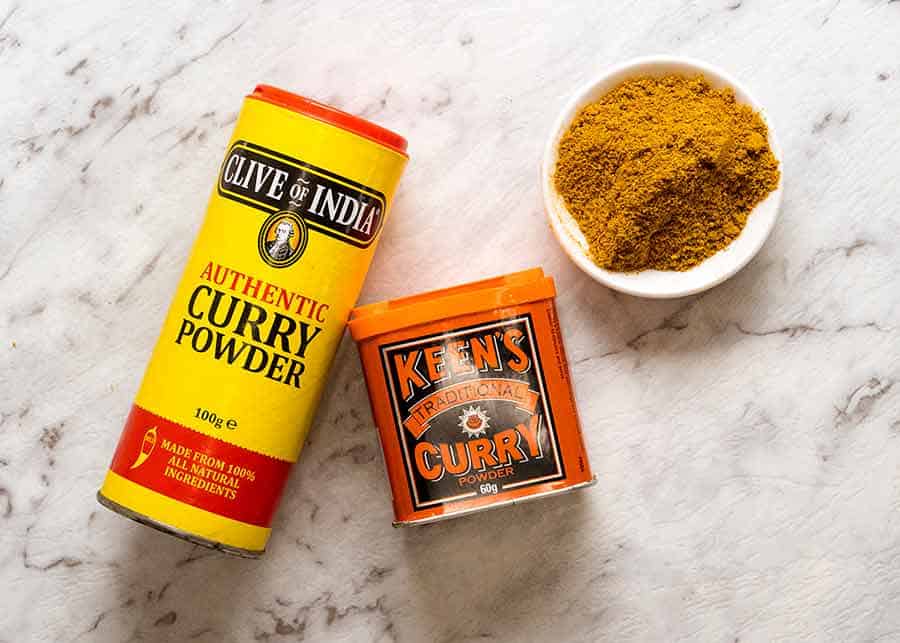
How to make Singapore Chicken Vermicelli Noodles
As with all stir fries, have all the ingredients chopped and ready to toss into the pan. Because once you start cooking, there is no time to stop!
SOAK VERMICELLI NOODLES
Prepare the vermicelli noodles per the packet directions. Usually it says to soak in warm or boiling water for 3 to 5 minutes, then drain. Nice and easy!
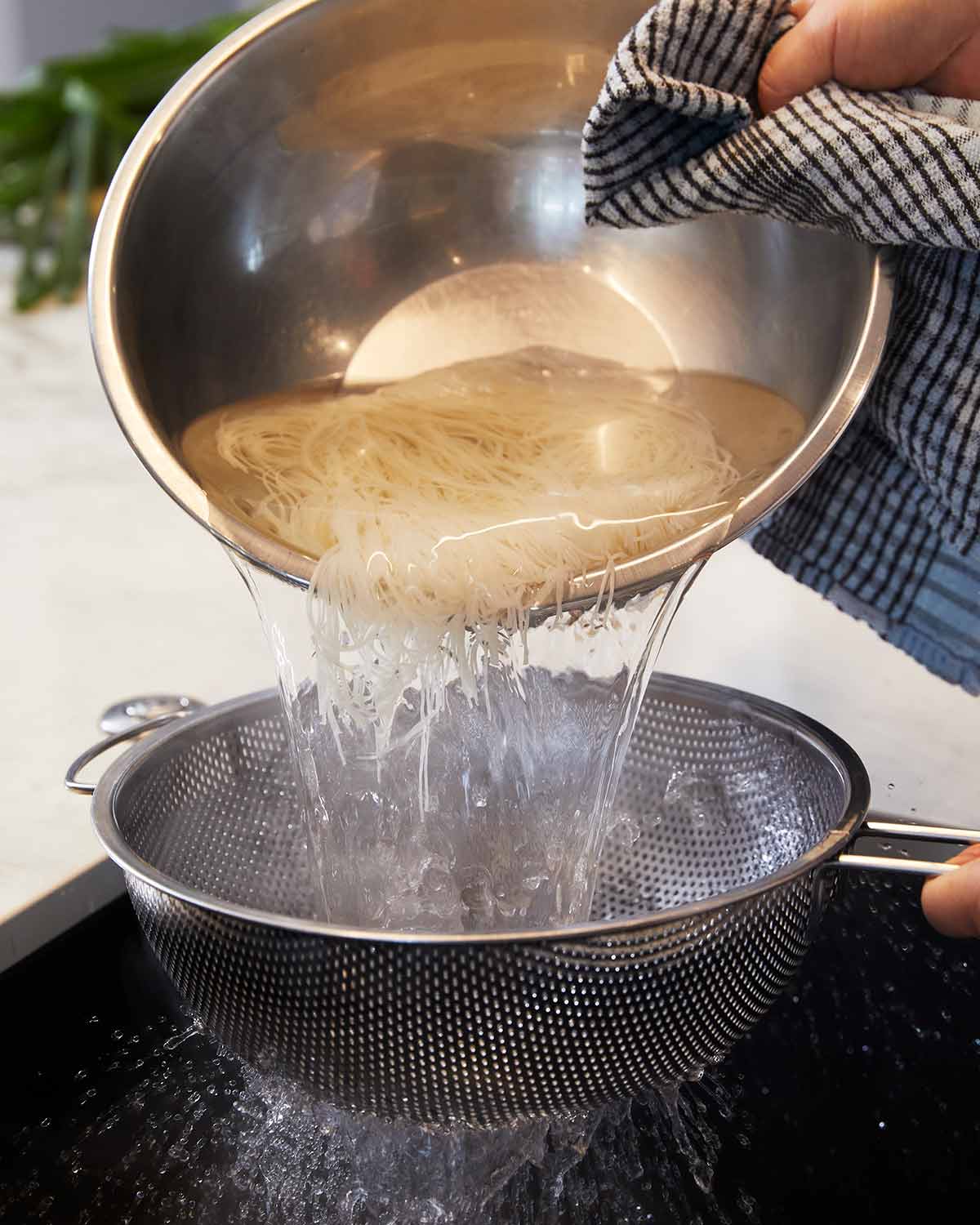
TIP: Don’t soak the noodles until you’re ready to start cooking. The longer the noodles sit around, the more prone they are to breaking. This tip applies to most noodles.
MAKING THE STIR FRIED NOODLES
Once your ingredients are chopped and measured out, it takes around 10 minutes to cook from start to finish. Nice and fast, as most stir fried noodlesare!

-
Toss the chicken in the curry powder and salt, then set aside. There’s no need to let it marinate because the chicken pieces are so small and each piece is coated in the tasty curry powder.
-
Mix the sauce ingredients in a small jug.

-
Egg omelette – First up, make the egg ribbons. Heat a tiny amount of oil in the pan – just enough to spread across the base. Then once hot, pour the whisked eggs in and swirl so it covers the base of the pan. Leave it on the stove until the surface sets but is still a bit wet – it literally takes around 30 seconds.
-
Egg ribbons – Flip or slide the omelette onto a cutting board. Once it’s cool enough to handle, roll it up like a cigar then slice thinly. Voila! Egg ribbons!

-
Stir fry – The order in which things are added into the pan is very deliberate! First, the bacon. It needs a head start and also I like to get some of the fat melting into the pan so it flavours everything else. After a minute, add the onion and cook until it’s starting to wilt, about 2 minutes. Then add the chicken and cook until the surface is seared (the inside will still be raw).
-
Capsicum and garlic – Next, the capsicum and garlic. Cook for 2 minutes, by which time the chicken will be cooked through, the onion is translucent and the bacon is golden. Perfect!

-
Noodles and sauce – Add (in this order) the baby spinach, bean sprouts, noodles then sauce. The idea being that the noodles weigh the fluffy veg down! Then toss for a good 2 minutes until the sauce reduces and stains the noodles a lovely yellow(y) colour. Heads up – there may be some noodle breakage, with some noodle brands breaking more easily than others. And that’s totally ok.
-
Egg ribbons – And finally, gently toss through the egg ribbons just to disperse. Then serve!
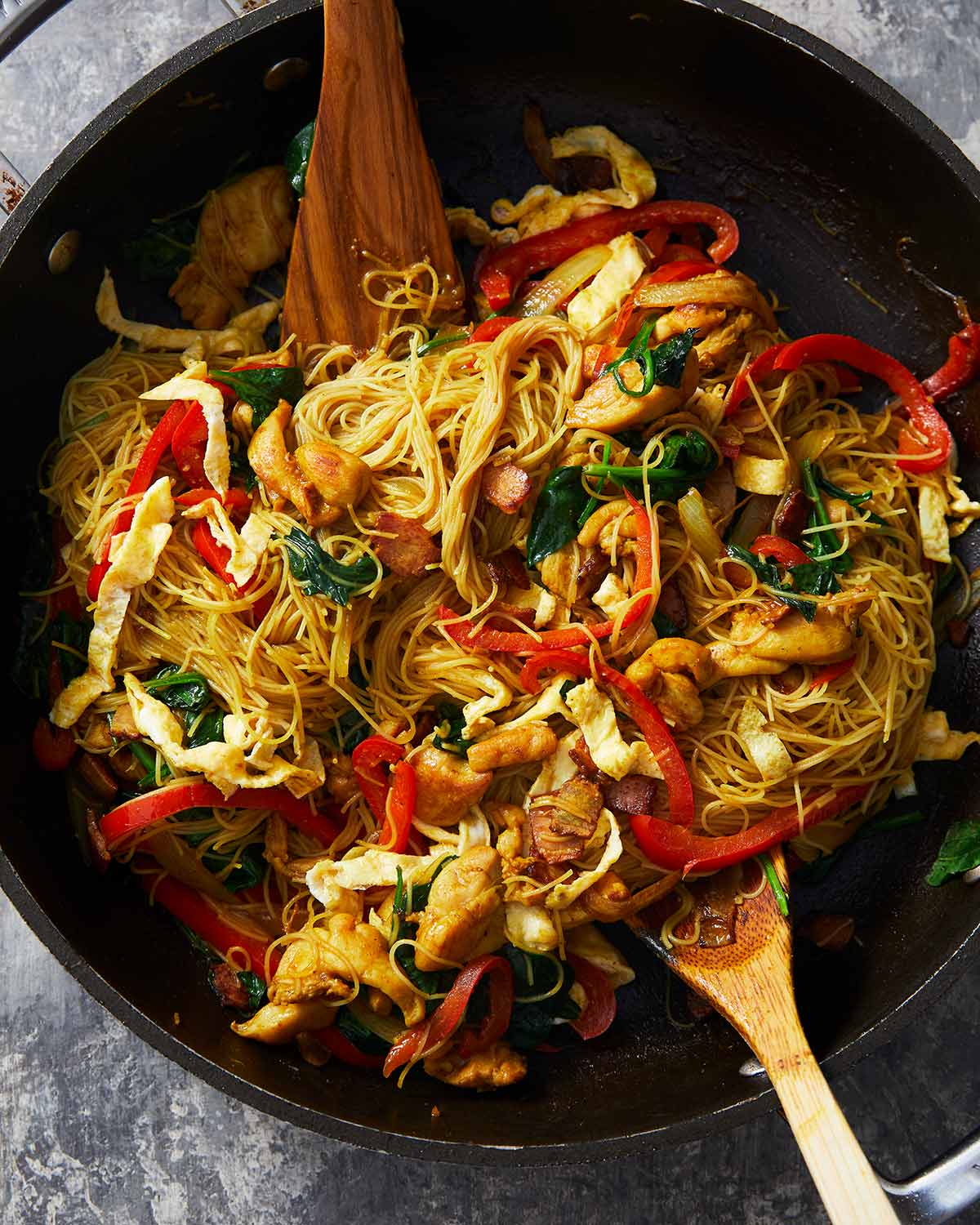
Today’s photos – shot by Rob Palmer!
Before I sign off, I just want to make mention of the photos in today’s post. The finished dish photos were taken by Rob Palmer who is a professional photographer here in Sydney I have worked with on various projects, including my cookbook. These photos were taken at my house in a make-shift studio we set up for the day.

Getting Rob to take the photos for my website is part of my longer term plan to try to get a better work-life balance. I’ve made no secret of the fact that I’ve been struggling in recent years with my workload as my team, business and activities has expanded. And I am determined to fix it! Life is too short, and I am genuinely worried I will burn out.
There will be a transition period. And I’d always like to do some of the photos because I genuinely enjoy it. But I hope to eventually have Rob taking most of the photos for the website. Plus, we can do more photos with Dozer and I in them!
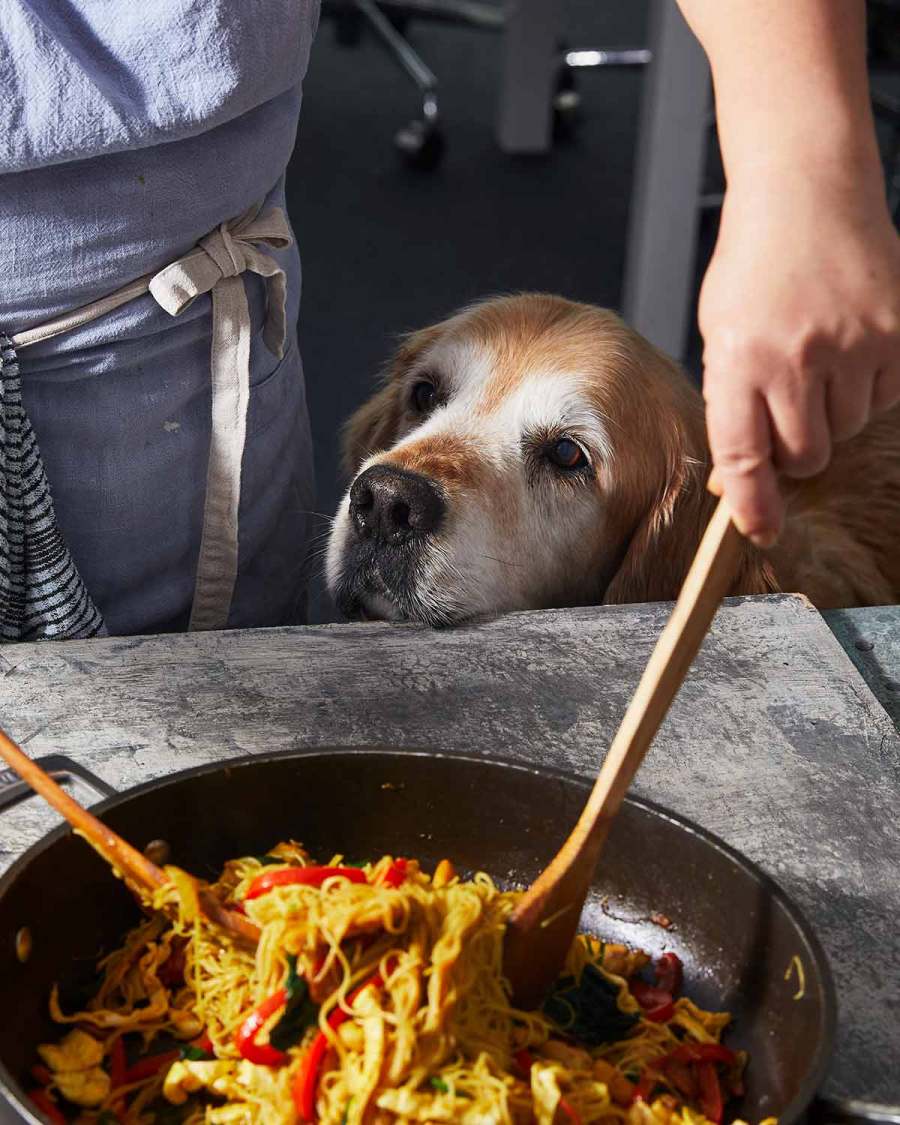
I’d like to do a bit of a RecipeTin-world update soon, because there’s actually a lot that’s been happening which is why I’ve been publishing less than my typical 3 new recipes a week. So I won’t go into more details today, I’ll sign off here.



